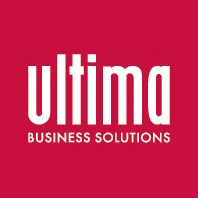Having just returned from the lush green warmth of Microsoft Ignite in Orlando I thought I would post an update on some of the themes I picked up on during the week.
Three of us from Ultima attended this year so we tried to cover a wide range of sessions both inside and outside of our regular practice area. My colleague will post a technology focused report soon on the Microsoft datacentre and cloud components.
Driving Digital Transformation - Microsoft Teams
It was clear from the keynote from Satya Nadella, that one of the main themes of the conference was about bringing people to work together to drive Digital Transformation - and it was no coincidence that the first demo was a meeting in mixed reality using Teams.

We saw a group of engineers and designers working together around a car, able to change the designs on the fly using the Microsoft HoloLens and mixed reality – something we got to try in the Expo later in the day.
The meeting was conducted in Teams with a remote user able to fully participate in the mixed reality and the session, including notes made in the mixed reality, all posted directly and automatically to the Teams site.

Microsoft Teams is becoming the core collaboration tool and the client can now manage calls, voicemail, contacts and history all within the same console.
More enterprise voice features will be appearing in the near future, and the Teams client will soon replace the Skype for Business (SfB) client.
Migration from SfB to Teams is straightforward (just a switch) and can be done gradually while the Teams client is being rolled out across your enterprise.
One of the very useful new preview features is Meeting Recording which records the meeting and the transcript (stored in Azure) so that you can search the text for keywords and jump straight to that point in the meeting recording.
The admin consoles for SfB and Teams are also being brought together and call analytics tools will show both Teams and SfB calls with full auditing available across both systems.
Guest access for Teams will shortly be available, enabling the expansion of the dynamic teams beyond the enterprise.
SfB will still be developed (including the client for now) and the next version of Skype for Business server (2019) is due in Q4 of 2018, along with Office 2019, SharePoint Server 2019 and Exchange 2019.
For further reading please see below:
Journey from Skype for Business to Microsoft Teams
Intelligent Communications in Office 365
SharePoint and OneDrive for Business
SharePoint and OneDrive for Business (ODfB) also had many updates. I picked up on hubsites which is a concept that allows you to join a site to an existing “Hubsite” so that it automatically gets the correct branding and navigation. It’s quite dynamic and you can join and leave hubsites if you are the site administrator.
There was also a small feature that I will find personally very helpful which is automatic text extraction from photographs. So, if you drop a load of photographs of receipts into your OneDrive you can search for the “Burger” you had - rather than trawl through very similar looking photos.
There are some admin updates too, with a SharePoint migration tool that will pull data from home directories, file shares and document libraries to SharePoint.
OneDrive for Business gets a feature to allow users to rollback to any point in time during the past 30 days – very handy if you have had some sort of corruption or malware attack.
Multi-region support is also being added so that one tenant can have resources (mailboxes, ODfB and SharePoint sites) across multiple regions.
The main purpose given was to solve the issue for multinationals on Office 365 where countries have different compliance regulations that must be adhered to. It was specifically stated that this was not to solve performance issues (although I got mixed messages from other sessions and can’t see why it wouldn’t be a better experience).
Multi-region support for ODfB and email is in preview now and SharePoint support is due next year sometime.
One security hole that has been plugged is a conditional access option that restricts unmanaged devices to a web-only access so they are not able to download or copy any documents from SharePoint or ODfB. This will soon be possible on a per site and per file basis and will work in conjunction with Azure Information Protection Policies.
For further reading please see below:
Connecting the modern workplace with SharePoint and OneDrive
Multi-Geo Capabilities in OneDrive and SharePoint Online in Office 365
Security and Compliance
Security and Compliance was a central message in almost all the sessions I attended, and Microsoft is making a big effort to bring it together across all the components of Office 365 and the wider cloud platform.
Most of the security management and reporting security is being moved into the Security and Compliance center so policies that apply across the platform (email, SharePoint, Teams, SfB etc) can be set once for all services.
One of the useful new services in preview is Compliance Manager that has a real-time risk assessment covering O365, Azure and Dynamics - with practical actionable insights to improve your security possible and mitigate risk.
There is a control management tool which allows you to assign compliance tasks across teams, and built in audit reports for GDRP, NIST and ISO standards.
O365 gets some new Threat Intelligence tools including an Attack simulator that allows security admins to simulate attacks like Spear Phishing and Brute Force Password attacks against users, and a Threat Explorer that reports on risky content activity such as files with sensitive data being shared outside of the organisation or risky user activities such as suspicious login behaviour.
Message encryption also gets easier with simple options on email such as “Do not forward” and automatic encryption and decryption based on policies.
Azure Information Protection now has a labelling available in Office for Mac applications. Classification is being added to the security and compliance center, and labels are finally being integrated with Data Loss Prevention policies. AIP Scanner is in private preview which will enable labelling and classification of existing documents based on policies.
For further reading please see below:
Bringing deeper integration and new capabilities to Office 365 security & compliance
Compliance Manager Preview Programme
- By Geoff Hardwick (Solutions Architect)



